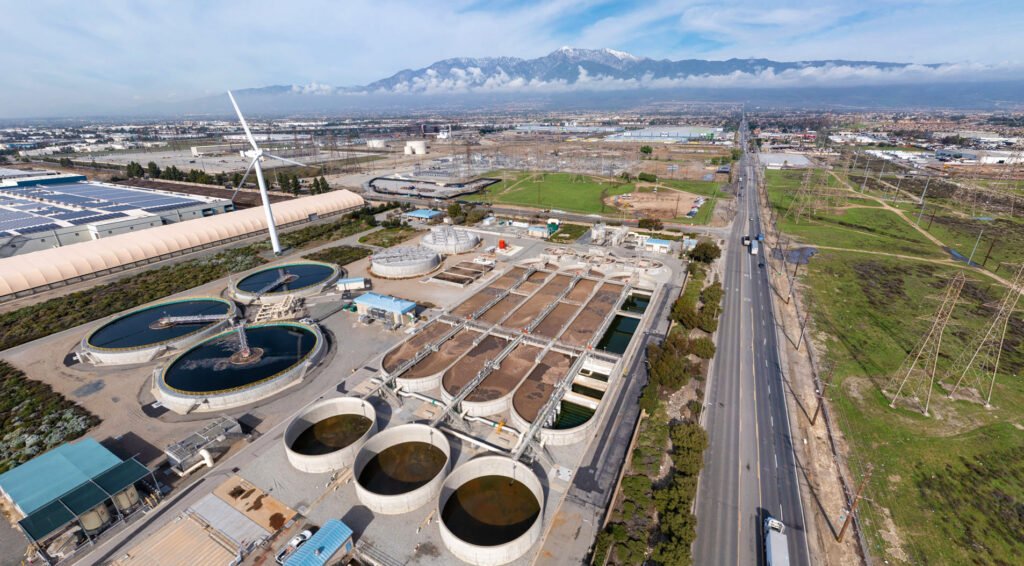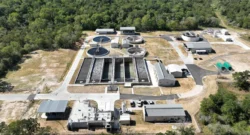Inland Empire Utilities Agency Regional Plant No. 1

The Inland Empire Utilities Agency (IEUA) Regional Plant No. 1 (RP-1) stands as a cornerstone in Southern California’s array of infrastructure dedicated to water treatment and resource management. Serving a populous and dynamically growing region, the RP-1 plant plays a crucial role in sustainable water management, environmental stewardship, and community engagement. This article delves into the nuances of RP-1, its capacity, recent achievements, and its relationship with the community it serves.
Population Served
Located in the heart of the Inland Empire, IEUA’s RP-1 provides wastewater treatment services to a substantial portion of San Bernardino County. The plant serves approximately 875,000 residents across multiple cities and unincorporated areas. These cities include Ontario, Chino, Chino Hills, Montclair, Upland, and Rancho Cucamonga, along with parts of Fontana. The sphere of influence is expansive and growing, necessitating robust and forward-thinking infrastructure to manage the region’s water needs.
Wastewater Volume
Given the burgeoning population and industrial activities within the Inland Empire, wastewater management is a critical concern. The RP-1 plant handles an average of 44 million gallons of wastewater per day (MGD). This volume includes domestic wastewater from households, as well as industrial effluent from manufacturing and other commercial activities prevalent in the region. Effective management of this substantial wastewater volume is crucial not just for public health but also for maintaining ecological balance in the local environment.
Treatment Capacity
IEUA RP-1 is designed with a treatment capacity of up to 65 MGD, leaving room for scalability in response to future growth. The treatment process at RP-1 involves multiple stages, including preliminary treatment, primary treatment, secondary treatment, and tertiary treatment. Advanced treatment processes like nitrification, denitrification, and chlorination ensure that the effluent released into local waterways meets stringent state and federal guidelines. Reclaimed water is also a significant byproduct of the treatment process, contributing to the agency’s sustainability goals.
Recent Local News
Initiatives and Upgrades
In recent years, IEUA has been proactive in upgrading RP-1’s infrastructure. One of the most notable projects is the installation of new advanced treatment technologies. In 2022, the plant embarked on a $50 million project to upgrade its secondary treatment facilities. This upgrade involves the implementation of advanced biological treatment processes that enhance the plant’s efficiency and reduce its carbon footprint. The project is expected to be completed by 2025 and will bolster RP-1’s capacity to manage the increasing wastewater load effectively.
Environmental Stewardship
IEUA has made headlines for its commitment to environmental stewardship. In 2023, RP-1 was recognized for its outstanding efforts in resource recovery. The plant has an innovative program that captures methane gas produced during the treatment process and converts it into electricity. This not only reduces greenhouse gas emissions but also powers a significant portion of the plant’s operations, showcasing a model of circular economy in action.
Key Projects
Renewable Energy Initiatives
The RP-1 facility is at the forefront of integrating renewable energy sources into its operations. In addition to biogas recovery, the facility has been investing in solar power. A project completed in late 2021 saw the installation of a 2-megawatt solar array. This initiative not only reduces operational costs but also aligns with IEUA’s mission to reduce its environmental footprint and promote sustainability.
Water Recycling and Reuse
Water recycling is a key component of IEUA’s strategy to ensure a sustainable water supply for the region. RP-1 plays a crucial role in this strategy by treating and repurposing wastewater for non-potable uses. The recycled water is used for irrigation of public parks, golf courses, and agricultural lands. In 2023, the plant expanded its recycled water distribution network, increasing its capacity to provide high-quality recycled water to more areas, thus reducing the demand on potable water sources.
Community Engagement and Education
IEUA has a strong tradition of community engagement, particularly around educating the public on water conservation and sustainable practices. The agency runs several educational programs targeting schools, community groups, and the general public. These programs often include tours of the RP-1 facility, providing residents with a firsthand look at the intricate processes involved in wastewater treatment and water recycling.
Community Engagement
Public Outreach Programs
IEUA’s commitment to community engagement is evident in its extensive public outreach programs. Through workshops, seminars, and public tours, the agency endeavors to educate residents about the importance of water conservation, wastewater treatment, and the role of recycled water in sustaining Southern California’s water supply. One of the flagship programs is “Water Discovery Day,” where families and students are invited to the RP-1 facility to learn about water cycles, conservation techniques, and the innovative technologies utilized by the agency.
Interactive Platforms
In the digital age, IEUA has leveraged online platforms to enhance communication with the community. The agency’s website offers detailed information about ongoing projects, water quality reports, and conservation tips. Social media channels serve as dynamic spaces for updates, educational content, and interactive Q&A sessions where residents can engage directly with water experts.
Stakeholder Meetings
To foster transparency and community trust, IEUA regularly holds stakeholder meetings. These meetings are open forums where residents, business owners, and other stakeholders can voice their concerns, ask questions, and provide feedback on various projects and initiatives. The feedback gathered in these meetings is invaluable for the agency as it plans future upgrades and community programs.
Future Outlook
Evolving Challenges and Innovative Solutions
As the Inland Empire continues to grow, so too will the challenges related to water management. Population growth, climate change, and industrial expansion will place increasing demands on the RP-1 facility. To stay ahead, IEUA is investing in research and development of new technologies that can increase efficiency, reduce environmental impact, and manage the ever-growing wastewater volume.
Strategic Partnerships
IEUA understands the importance of collaboration. The agency has established strategic partnerships with local governments, educational institutions, and private enterprises to foster innovation in water management. These partnerships are crucial for funding new projects, advancing research, and implementing best practices in sustainable water use.
Policy Advocacy
IEUA is also actively involved in policy advocacy at the state and federal levels. By participating in legislative processes and working with policymakers, the agency aims to shape regulations that support sustainable water management and secure funding for essential infrastructure projects.
Conclusion
The Inland Empire Utilities Agency Regional Plant No. 1 exemplifies the critical role that modern, efficient, and community-focused infrastructure plays in public service. From managing significant wastewater volumes with advanced treatment technologies to engaging the community through educational initiatives, RP-1 stands as a model for sustainable and forward-thinking water management. As the Inland Empire continues to grow and evolve, so too will the challenges, but with the strategic direction and innovative approach of IEUA, the future of water management in the region looks promising. Through continuous improvement, community engagement, and a steadfast commitment to sustainability, RP-1 is poised to serve the Inland Empire for many more decades to come.



